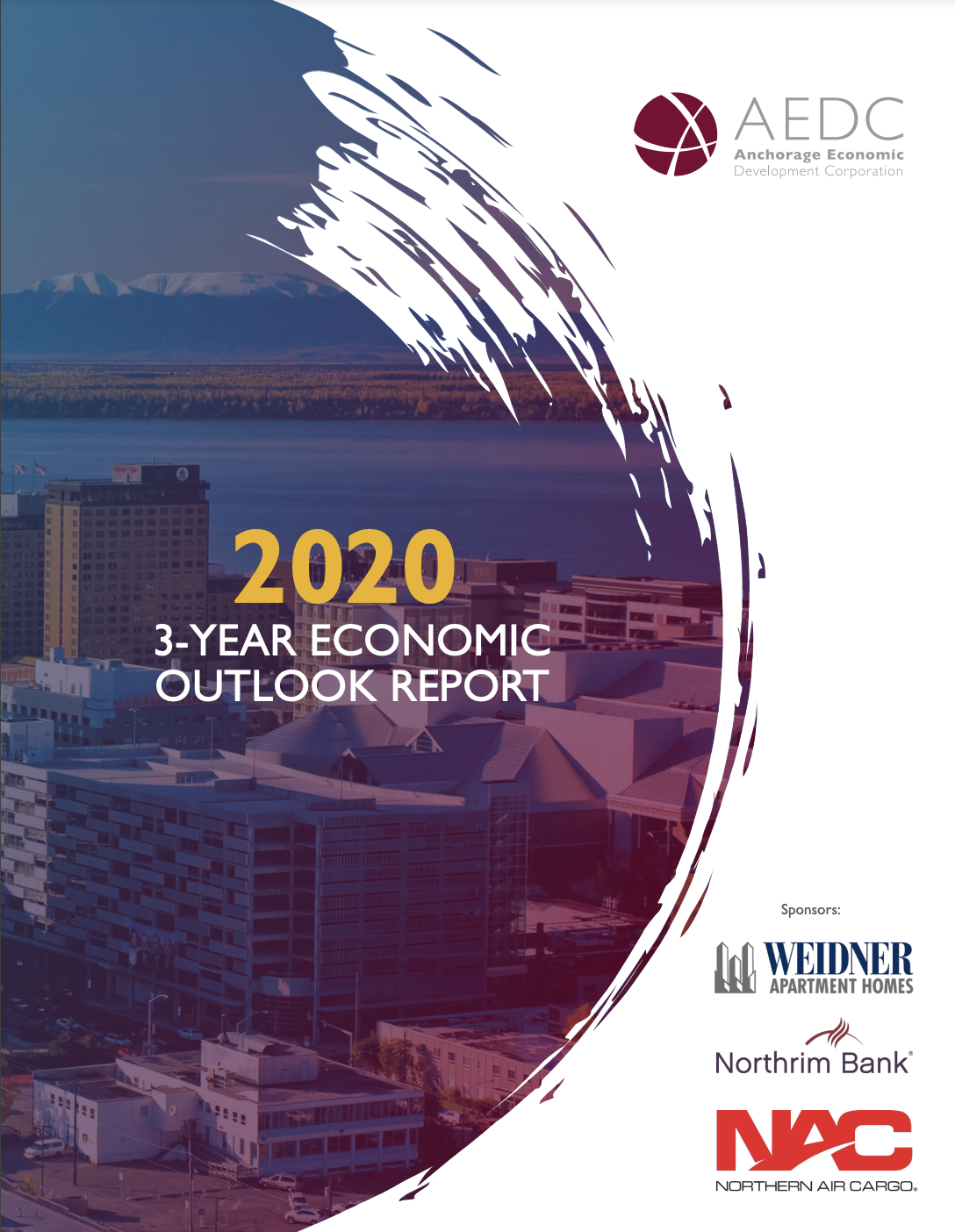Research & Reports
2020 3-Year Outlook Report
In the 12 years AEDC has been preparing 3-year economic outlook reports, there have never been greater challenges facing the Alaska economy or more uncertainty about the path ahead. As this forecast is being presented, employment in Anchorage is 16,000 jobs below the same time last year, a loss of 10%. Unemployment stands at 12%, more than double the rate one year ago. The leisure and hospitality sectors have been hardest-hit, along with transportation providers, many retailers, and personal services providers, but nearly all segments of the local economy have suffered.
The COVID-19 pandemic has caused massive economic disruption in Alaska, the U.S., and around the world. The U.S. is now several months into what promises to be a slow, multi-year recovery. Public health and economic recovery will be closely intertwined, and how we balance health risk with “reopening” the economy will be key. The Congressional Budget Office forecasts the U.S. economy will recover to pre-pandemic levels by mid-2022. Other forecasts paint the same general picture of slow recovery of the U.S. economy over the next two years.
How closely Alaska and Anchorage will parallel the U.S. recovery is uncertain. Anchorage entered 2020 still in recession. December 2019 employment was 930 jobs below December 2018. About half of that loss was in retail trade, a sector experiencing long-term decline for reasons mainly unrelated to the strength of the Anchorage economy. In any case, the outlook for recovery would be stronger if there was pre-pandemic economic momentum.
The flow of federal funds into Alaska has been critical in mitigating the economic damage infli cted by COVID-19. CARES Act funds, the Payroll Protection Program, Economic Impact Payments, expanded unemployment payments, and other federal programs have pushed half a billion dollars into the Anchorage economy over the past few months. The pace of recovery will depend in part on how Congress chooses to fund these and related programs going forward.
The sharp drop in oil prices adds another layer of concern. While prices have rebounded from historically low levels in April, the current ANS price of about $40 is well below the price needed to sustain State services at their current levels. Permanent Fund earnings are now an important part of the state government funding picture, but the oil industry remains an essential source of revenue. Just the threat of new taxes on the industry is depressing an already difficult investment environment.
The news is not all bad. Anchorage is fortunate to have the steadying and important source of economic activity provided by the military. The volume of air cargo through the airport reached record levels in the second quarter of 2020, as freight typically carried in the belly of trans-Pacific passenger jets was diverted to air freighters.
This 3-year forecast articulates the uncertainty ahead and AEDC’s best assessment of the strength and timing of economic recovery. It also begins the conversation about rebuilding a more resilient economy and more fully leveraging our assets in a world that has been dramatically changed by recent events.




